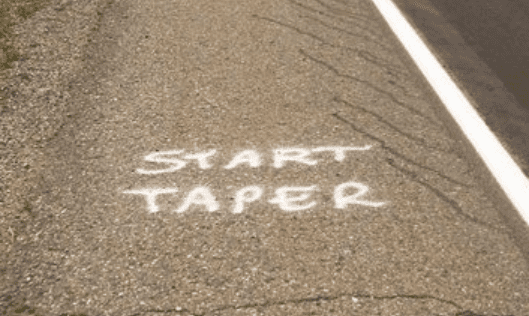The dos and don’ts of tapering
The taper is one of the most important parts of your training plan, so make sure you do it right

Tapering is one of the best parts of a well-thought-out training plan. The bulk of your work is done, your hardest workouts and longest runs are behind you, and you can relax, feel proud of yourself for sticking to your program and focus on your upcoming race. While these last couple weeks of your training plan aren’t as intense, tapering is one of the most important aspects of your training cycle, and one of the easiest parts to get wrong. Pay attention to these dos and don’ts to avoid making mistakes that could come back to bite you on race day.

RELATED: The 6 emotional stages of tapering
The dos
During your taper, you should try to stay off your feet more than normal. This is often the hardest part for runners because we’re used to expending a lot of energy every day during workouts and runs, but you want to make sure you’re well-rested going into race day. You want to feel slightly antsy and ready to go when you toe the start line, not tired and heavy. If you use an activity tracker, now is the time when you want your daily step counter to be on the lower end.
Now is also the time to focus on eating and sleeping a lot. Make sure you’re consuming plenty of carbohydrates every day, and try to get seven to eight hours of good quality sleep every night. This will allow your muscle glycogen stores to return to peak levels, and give your muscles and connective tissues a chance to repair and strengthen after a long training cycle. Basically, you’re trying to minimize fatigue that you’ve accumulated throughout your training and recover properly so you’re at your peak performance level on race day.
Your taper should begin immediately following the last long run on your training schedule, and at that point, you should begin cutting back on your mileage. Ideally, you should be reducing your running volume by about 20 to 30 per cent per week for about three weeks leading up to race day. For example, if your highest-volume week was 65K, you would cut your volume down by 13K to 19K in the first week of your taper.
If you typically do a few strength training sessions each week, your taper is the time when you should be cutting them out. The goal of the taper is to repair your muscles, not break them down by lifting weights, and the last thing you would want to do is hurt yourself lifting during a gym session before your goal race.
Finally, wear comfortable shoes while you’re tapering — that means no high heels.

Don’ts
When you’re used to doing a high volume of activity, it’s tempting to want to compensate during your taper by either adding in activities like walking, yoga or other sports, or to cut back on how much food you’re eating. The only thing you should be worrying about at this point is eating enough and resting, and you certainly shouldn’t be cutting back on food — you’re going to need all the energy you can get on race day.
On that note, now is not the time to try a new activity. Your friend’s been bugging you to join them at a hot yoga class? You’ve been thinking about trying rock climbing for the first time? These are all great ideas for things to do after your race, but for now, keep it safe and focus on resting. Now is also not the time to try new foods or eat anything questionable. Food poisoning right before a race never helped anyone perform better.
Finally, now is not the time to stress. Don’t stress about things outside your control, like the weather, and don’t lose sleep over the runs or workouts that you weren’t able to complete during your training. You’ve done everything you could up to this point, and you’re not going to gain anything from trying to squeeze in a few more workouts before race day. As they say, the hay is in the barn, so just relax, focus on your race and trust yourself that you’ve done the work.


